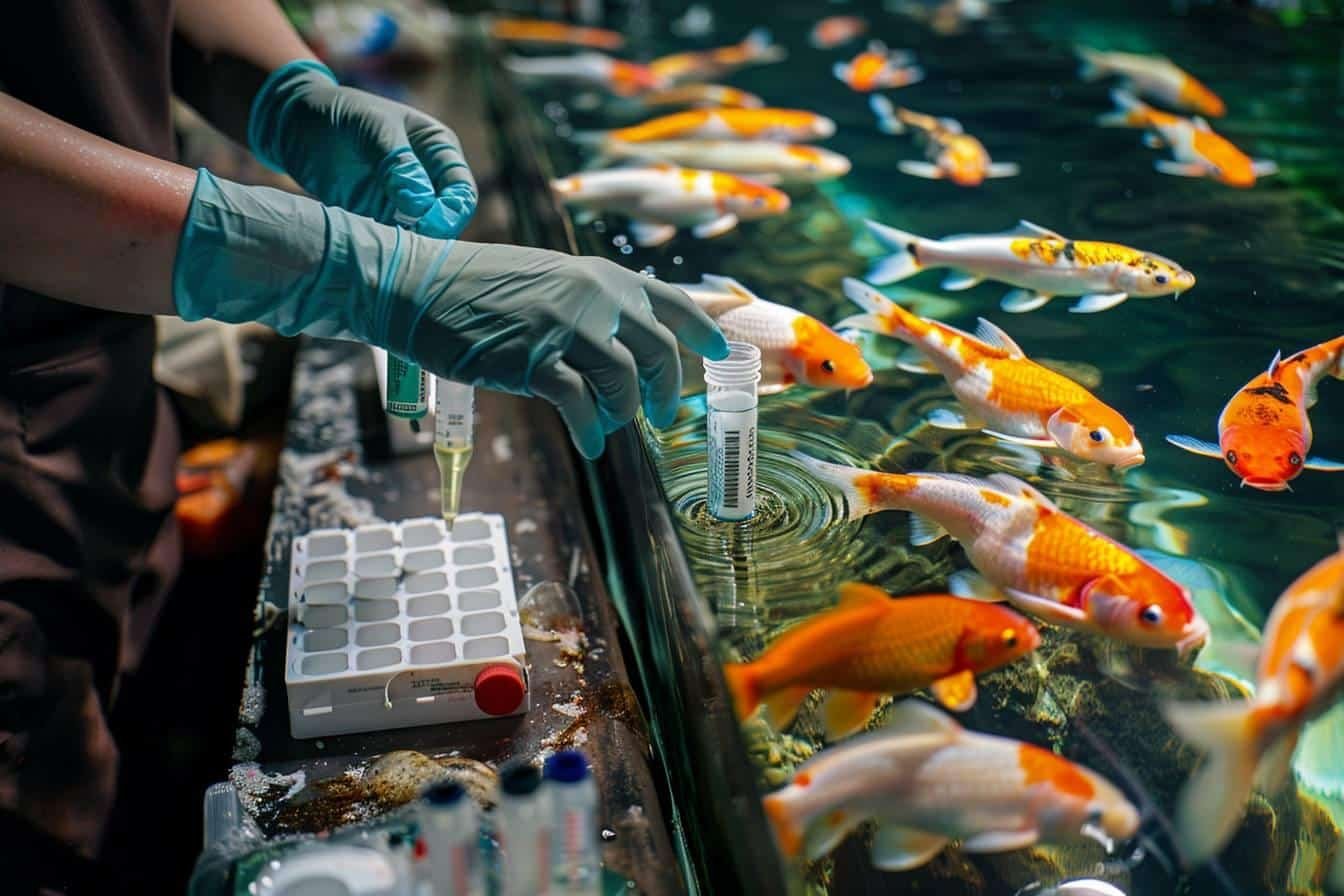The article in brief
Discover the fascinating art of aquascaping, a practice that combines creativity and knowledge of aquatic ecosystems to create truly miniature underwater landscapes.
- Aquascaping allows you to recreating tropical ecosystems at home
- The key elements are substrate, plants, wood and rocks
- The choice of animal and plant species is necessary for balance
- A regular maintenance is necessary to maintain the beauty of the aquascape
- This practice combines creativity, science and patience
I've always been fascinated by the beauty and diversity of underwater ecosystems. Now that I'm a department manager in a pet shop, I'd like to share my passion for marine life with you. aquascape aquariums. These veritable living works of art let you create a little corner of aquatic paradise in your own home. Let me guide you through this captivating world where nature invites itself into your home.
The art of creating a miniature waterscape
Aquascaping is much more than just a hobby, it's an art in its own right. It involves designing and creating natural, aesthetically pleasing aquatic landscapes in an aquarium. It requires creativity, patience and a good knowledge of aquatic species.
The essential elements of a successful aquascape
To create a aquascape aquarium worthy of the name, several elements are essential:
- A suitable substrate
- A variety of aquatic plants
- Rocks and aquarium wood
- Adequate lighting
- An efficient filtration system
I remember my first aquascape was a disaster! I underestimated the importance of the substrate and chose incompatible plants. But if you persevere, you'll soon make progress!
The choice of wood: a key element in your décor
Wood plays a crucial role in the look and function of your aquarium. Not only does it look natural, it also provides hiding places for your fish and support for your plants. The most popular types of wood include :
- Bogwood, with its rustic charm
- Mopani wood, with its tortuous shapes
- Sumatran root, highly prized for its gnarled appearance
Be careful, though: some woods can release tannins that colour the water and alter the pH. Pre-soaking is often necessary to avoid these problems.
Plant selection: bring your aquascape to life
Plants are the soul of your aquascape. They bring colour, texture and movement to your creation. Choose them according to their needs for light, nutrients and speed of growth. Don't hesitate to vary the species to create interesting contrasts.
Recreating tropical aquatic ecosystems at home
One of the most exciting aspects of the aquascape aquariums is the chance to recreate tropical aquatic ecosystems in your living room. Whether you're drawn to colourful coral reefs, mysterious mangroves or African lakes, anything is possible with a little imagination and technique.
The different types of ecosystem to be reproduced
Here's an overview of the main ecosystems you can reproduce in your aquarium:
| Ecosystem | Features | Emblematic species |
|---|---|---|
| Coral reef | Clear, very luminous water | Clownfish, corals |
| Mangrove | Brackish water, aerial roots | Periophthals, fiddler crabs |
| African lake | Fresh water, rocks | Cichlids, synodontis |
| Asian river | Current, gravel | Botias, danios |
Personally, I have a soft spot for Amazonian biotopes. The tannin-stained water, tangled roots and schools of neon grouse create a truly unique atmosphere!
Choosing the right species: creating a harmonious balance
Selecting the inhabitants of your aquascape is a crucial stage. You need to take into account the compatibility of the species, as well as their specific needs in terms of space, food and water quality. Don't forget that your aquarium is a closed ecosystem: each addition or removal can have consequences for the whole.
If you're interested in larger fish, I recommend that you take a look at our article on how to create the perfect koi carp aquarium. These magnificent fish can add a touch of originality to your installation!
The importance of water quality
Water quality is the key to the success of your aquascape. A good chemical balance is essential for the health of your plants and fish. Here are the main parameters to monitor:
- The pH
- Hardness (GH and KH)
- The temperature
- Nitrate levels
Regular tests and partial water changes will help you keep these parameters stable. It's a bit tedious at first, but it soon becomes routine!

Maintenance and development of your water paradise
Creating a beautiful aquascape is only the first step. The real challenge lies in maintaining it and keeping it looking its best over time. An aquarium is a living ecosystem that needs regular care to stay healthy and aesthetically pleasing.
There are several aspects to regular maintenance:
- Cleaning windows and equipment
- Pruning plants
- Partial water changes
- Adjusting fertilisation
- Control of algae
Don't be afraid to develop your aquascape over time. Plants will grow, and some species may take over from others. This is your chance to reshape your landscape, add new elements or completely change the style!
As an enthusiast, I find it interesting to see how an aquascape evolves naturally. It's like an underwater garden that never ceases to surprise!
A rewarding, multi-faceted hobby
Aquascaping is much more than just a hobby. It's an activity that combines creativity, scientific knowledge and patience. It allows you to create a real miniature ecosystem, a window on a fascinating aquatic world in the heart of your home.
By embarking on the adventure of aquascape aquariumsYou won't just be decorating your home. You'll learn an enormous amount about aquatic biology, water chemistry and tropical ecosystems. It's a great way to raise awareness of the beauty and fragility of aquatic environments.
So, are you ready to dive into this exciting world? Don't hesitate to find out more, talk to other enthusiasts and, above all, give free rein to your creativity. Each aquascape is unique, just like its creator!
External sources :
wiki aquaculture
wiki fish farming
